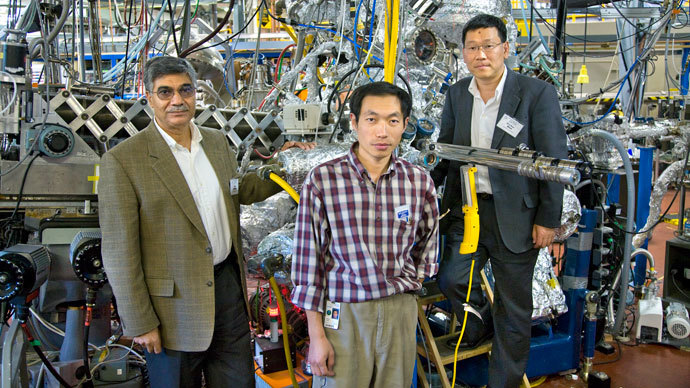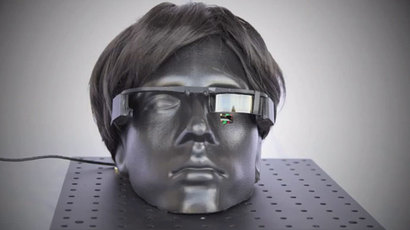Hi-tech gamechanger: Newly-discovered ‘3D graphene’ may lead to electronics revolution

Berkeley Lab researchers have found a 3D analogue of the cutting-edge 2D material graphene. It could revolutionize the high tech industry, bringing things like much faster, far more compact hard drives, and paving way for new electronic technologies.
Researchers at the US Department of Energy’s Lawrence Berkeley
National Laboratory have announced the discovery of a compound that
can exist as a form of quantum matter known as the
three-dimensional topological Dirac semi-metal (3DTDS).
The research team supported by the DOE Office of Science and the
National Science Foundation of China used sodium bismuthate to
produce this novel state, the very existence of which had been
proposed by theorists fairly recently. The discovery comes less
than a decade after graphene, the thinnest and the strongest
known stable material with amazing conductivity of electricity
and heat was isolated by UK-based, Russian-born scientists, Andre
Geim and Konstantin Novoselov.
Although dubbed a “wonder material,” graphene has not
yet seen an applicable use on an industrial scale. The reason for
that lies in its ground-breaking properties and structure, being
a two-dimensional, one-atom thick layer of graphite.
“Ever since graphene was isolated in 2004, researchers around
the world have looked for ways to take full advantage of its many
desirable properties. But the very thing that makes graphene
special – the fact that it consists of a single layer of atoms –
sometimes makes it difficult to work with, and a challenge to
manufacture,” explains Yulin Chen, a physicist with Berkeley
Lab’s Advanced Light Source (ALS).

However, the potential of the new material has fascinated
scientists and governments alike, with thousands of research
papers on graphene written since 2005 and numerous research
groups created in the UK, the US, Europe, Japan, China, Russia.
The EU promised to support the research of graphene with 1
billion euro ($1.3bn) if it can yield practical results in the
fields of electronics, energy, health and construction.
While some developed a way to produce semi-transparent,
ultra-thin and ultra-light graphene tape, others, including the
Berkeley Lab group, focused on looking for means of enclosing
graphene’s properties into a three-dimensional material.
Chen, who initiated the discovery, now states that “a 3DTDS
is a natural three-dimensional counterpart to graphene with
similar or even better electron mobility and velocity.”
The material’s properties feature magnetoresistance “orders
of magnitude higher than the materials now used in hard
drives” – a potential breakthrough for computer
technologies. It also “opens the door to more efficient optical
sensors,” Chen adds.
Unfortunately, sodium bismuthate, whose electronic structure was
tested at the lab’s ASL facility, is too unstable to be used in
devices without proper packaging. But having proved that a 3D
structure can actually have comparable or even better features of
graphene, the scientists are now extremely keen to explore and
develop sturdier 3DTDS materials.
If developed, they will provide “a significant improvement in
efficiency in many applications,” while being “easier to
fabricate,” Chen stresses, hinting that future electronic
technologies are close to reality.













